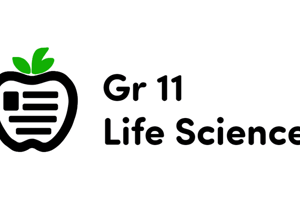Podcast
Questions and Answers
What is the main purpose of respiration in living organisms?
What is the main purpose of respiration in living organisms?
- To produce glucose
- To exchange life-essential gases (correct)
- To regulate body temperature
- To synthesize proteins
Where does the process of gas exchange primarily occur in humans during respiration?
Where does the process of gas exchange primarily occur in humans during respiration?
- Bronchi
- Trachea
- Alveoli (correct)
- Capillaries
How is oxygen transported from the alveoli to the rest of the body in humans?
How is oxygen transported from the alveoli to the rest of the body in humans?
- Via air in the bronchioles
- Through the alveolar walls
- Through red blood cells (correct)
- By diffusion across the trachea
What is the primary energy molecule produced during cellular respiration?
What is the primary energy molecule produced during cellular respiration?
Which structures work together in human lungs to facilitate gas exchange during respiration?
Which structures work together in human lungs to facilitate gas exchange during respiration?
What is the core process of cellular respiration?
What is the core process of cellular respiration?
Where does the citric acid cycle primarily take place?
Where does the citric acid cycle primarily take place?
What are the end products when acetyl Coenzyme A (acetyl CoA) breaks down during the citric acid cycle?
What are the end products when acetyl Coenzyme A (acetyl CoA) breaks down during the citric acid cycle?
What is the role of NADH and FADH₂ in cellular respiration?
What is the role of NADH and FADH₂ in cellular respiration?
What is the main function of chemiosmosis in cellular respiration?
What is the main function of chemiosmosis in cellular respiration?
Flashcards are hidden until you start studying
Study Notes
Exploring Respiration in Science Class 7
As seventh graders delve into understanding life's processes, one of the fundamental concepts they encounter is respiration. Respiration involves the interaction between living organisms and their environment, ensuring that life-essential gases like oxygen and carbon dioxide are exchanged. Let's dive deeper into this critical process through which all animals—including humans—obtain energy while maintaining homeostasis.
How Humans Breathe
In human beings, respiration occurs within our lungs via two types of structures called alveoli. These tiny air sacs work together with exchange vessels known as capillaries to facilitate gas exchange, allowing us to take in needed oxygen from the atmosphere and release waste products such as carbon dioxide back out. As we breathe in through our nose and mouth, warm and moist air moves down the trachea, bronchi, and bronchioles before reaching them—the ultimate site where diffusion takes place. Oxygen diffuses across the thin walls of the alveoli and enters red blood cells, while carbon dioxide leaves these cells and moves via the bloodstream towards the alveoli's outer surface, ready to exit during exhaling.
Cellular Respiration
Cellular respiration refers to a series of chemical reactions that break down organic molecules, primarily glucose, releasing stored energy in the form of ATP (adenosine triphosphate) for cellular functions. This conversion happens both inside animal cells and plant chloroplasts. At its core, cellular respiration relies upon the aerobic breakdown of sugars using oxygen as a catalyst; however, it can also occur anaerobically under specific conditions, producing less energy.
One essential aspect of cellular respiration is the citric acid cycle, a closed sequence of metabolic steps occurring in mitochondria. During this cyclical reaction, acetyl coenzyme A (acetyl CoA) breaks down to CO₂ and H₂O, generating high-energy phosphates such as NADH and FADH₂. These compounds donate electrons to electron transport chains, leading to a proton gradient that drives chemiosmosis—ultimately producing ATP.
The interconnectedness of respiratory systems and cellular respiration ensures that each living being, including those studying science class 7, experience sufficient energy levels to function optimally!
Studying That Suits You
Use AI to generate personalized quizzes and flashcards to suit your learning preferences.




